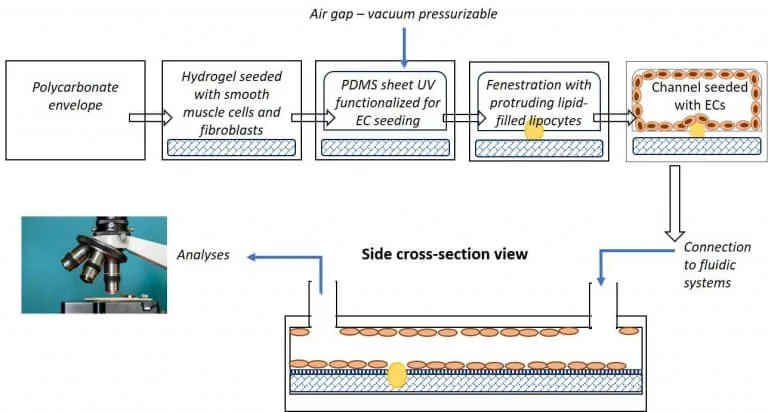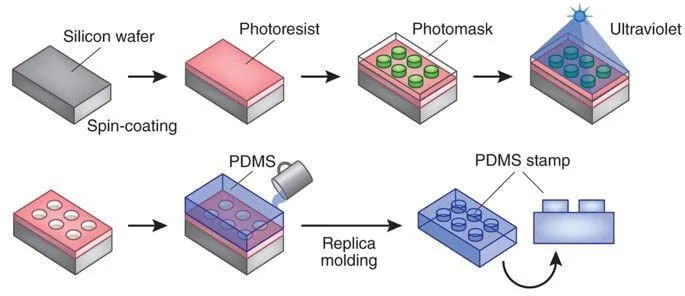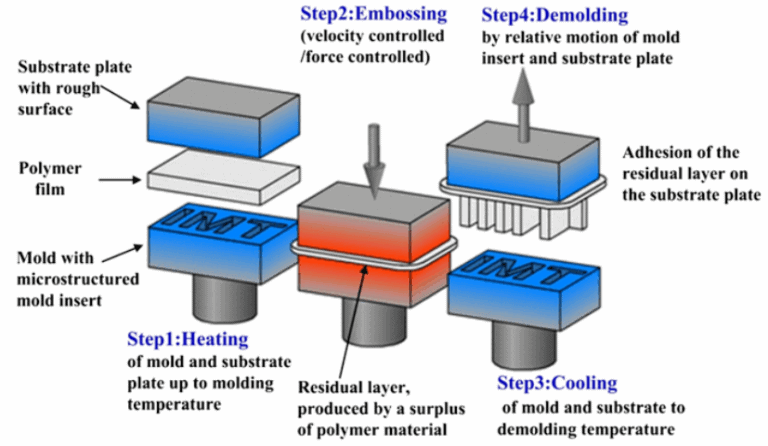Circular channel fabrication in microfluidic devices
Author
Oore-ofe Akeredolu
Publication Date
September 28, 2020
Keywords
circular channel
Microfluidic cell-culture
soft lithography
hot-embossing

Need advice for your circular channel fabrication?
Your microfluidic SME partner for Horizon Europe
We take care of microfluidic engineering, work on valorization and optimize the proposal with you
Circular channels in microfluidic devices are complex structures, and their fabrication requires specific techniques not commonly implemented in mass production. Therefore, it is nearly impossible to find microfluidic devices with circular channels today.

In this review, we will present the fabrication of circular microfluidic channels using a metal wire and the example of an artery-on-a-chip model.

Introduction to circular channels and their applications in microfluidics
Only a few representative models of vasculature and, specifically, carotid arteries have been developed so far, and existing models are not fully adapted to study the effects of disease, like the consequences of a stroke, on vascular cells. The most advanced models require laboratory animals or human trials, which raises ethical concerns.
The main objective of this study was to develop a novel microfluidic model with circular channels on the chip that combines strategically designed polymeric structures for cell culture to mimic the human vascular system in a reproducible way.
A microfluidic platform provides the added advantage of a controlled flow within the designed chip and its channels to assess the effects on cells. Figure 2 shows a schematic representation of a microfluidic artery-on-a-chip model and the use of circular channels within the device.
Microfabrication of circular channels
Using soft lithography
Standard microfluidic chips on the market have a rectangular cross-section of their channels due to technical limitations during manufacture.
Standard PDMS procedures use photolithography to fabricate a mold using a damaging photoresist liquid or dry film resist such as Ordyl©. The mold is laser etched from a predesigned mask into the desired pattern for the microfluidic chamber. The developed mold is then used as a frame for the liquid silicone elastomer base, PDMS, which solidifies to form the desired chamber design (Figure 2).
Multiple chambers with the same design can be fabricated by simply reusing the mask to produce the desired molds and pouring the PDMS to form an equivalent number of chambers. Here, we tried to create PDMS microfluidic chips with a circular cross-section of the channels. Such chips are currently not commercially available but would mimic the human blood vessel more accurately than devices with rectangular channels.
A channel structure with a circular cross-section would ensure biophysically representative fluid flow properties and shear forces inside the device. Unfortunately, the first attempts to produce microfluidic chips with circular channels showed that PDMS was unsuitable for this channel architecture as the manufacturing method is limited and reserved for channels with rectangular structures.

Using hot-embossing
Since PDMS was unsuitable for fabricating circular channels, we tried alternative approaches and settled for hot embossing using Flexdym®. An overview of the process of hot embossing is shown in Figure 3.
The styrene ethylene-butylene block copolymer thermoplastic Flexdym® that Eden Microfluidics has developed has already been successfully used for cell culture. We fabricated circular channels using a metal wire of the desired diameter, which was inserted between two layers of Flexdym® before hot-embossing and extracted after the mold had cooled down.
Using this technique, we could fabricate circular channels reproducibly using a metal wire with the initially proposed lumen diameter of 6.0 mm. The results are shown in Figure 4.


Microfluidic cell-culture in a circular channel
The microfluidic chip fabricated in Flexdym® was first assessed visually using dyed water to demonstrate uninterrupted laminar flow before seeding cells within the channel (Figure 5A and D). Following validation, HEK 293 cells were manually seeded into the device at 100 x 105 cells/mL concentration by pipetting. After 2 and 3 hours of incubation, the seeded cells were confirmed to have successfully attached to the walls of the device (Figures 5B and C).
DMEM growth media supplemented with CS (10%) Penicillin/Streptomycin was passed in through the chip twice every 4 hours by manual pipetting to sustain the cells for up to 3 days. These results were demonstrated to be reproducible with three similar fabricated chips.

Conclusions and perspectives
A microfluidic chip with circular channels is a prerequisite for an artery-on-a-chip model close to natural human physiology. This first attempt to manufacture circular channels in a microfluidic chip showed that it is possible to have a defined channel with the desired diameter.
Further, it was demonstrated that cells adhere successfully to the channel walls and that perfusion of the microfluidic chip is successfully maintaining the cells in culture. As a further step, the chip could be connected to an automated microfluidic perfusion system to reduce manual manipulations. In addition, introducing branches to the channel would be a challenging further development.
Review done thanks to the support of the H2020-MSCA-IF Action CAR-OAC, Grant agreement number: 843279
Author: Oore-ofe Akeredolu, Research engineer
Contact:
Partnership[at]microfluidic.fr




